Review: Plantronics BackBeat Fit 3100
Nov 28, 2018, 9:36 AM by Eric M. Zeman
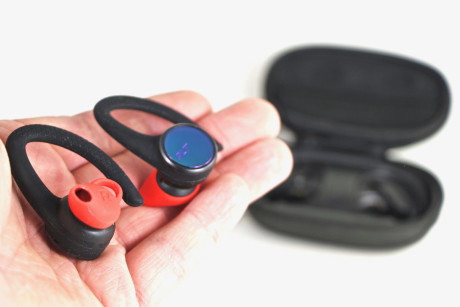
Plantronics' first foray into the truly wireless headphone space targets those who are always on the go. The BackBeat Fit 3100 fall into the company's sport and fitness range, making them a viable option for people who value stability and sweat resistance during their workouts.
As more manufacturers bring zero-wire headphones to market, it's curious to see all the variations. Some are small, some are big. Some are finely made, some are cheap. Prices range from affordable to awfully-high.
With its initial effort, Plantronics took aim not at audiophiles, but at fitness-minded folk. The BackBeat Fit 3100 in-ear headphones are meant to stay in place while you're training, and handle all the perspiration you can drop onto them.
Hardware
Plantronics' BackBeat Fit family of headphones are all meant for outdoor use during walks, runs, hikes, and other activities. The 3100 are truly wireless headphones and look as though someone took Plantronics' 2100 series and cut off the cord.
The 3100 have large hooks that wrap over the top of your ear. The ear hooks are soft rubber. Together with the eartips, which fit into your ear canal, the 3100 lock firmly into place. I couldn't wiggle them free by shaking my head or hopping around. The headphones are light and comfortable. I wore them for hours without encountering any ear fatigue.
Plantronics calls the eartip design "Always Aware." Many headphones require you to shove them deep into your ear to help block outside sound. The 3100s don't. There's but a single set of eartips included that do not block out all the surrounding sound. This is by design, as Plantronics believes athletes should be aware of their environment for safety reasons. I found the Always Aware eartips to be comfortable, but the single size might not work for everyone.
One Eartip
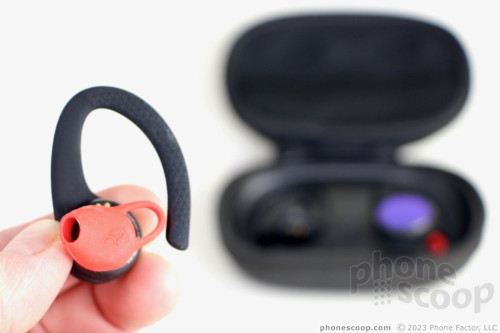
The controls are a little fussy. Each headphone has a flat, circular outer edge, about the size of a dime, that serves as the control surface. A firm press is required to get the control surface to "click" and recognize input. Plantronics has divided the controls between the two headphones. For example, the left side controls volume, while the right controls call answer/end, and skipping forward/back tracks. It's a bit of a pain to remember which does which and what combination of short, double, and long presses are required. The good news is that Plantronics allows you to customize these controls to a certain degree via the BackBeat app. The action of the button itself is fine.
Control Surface
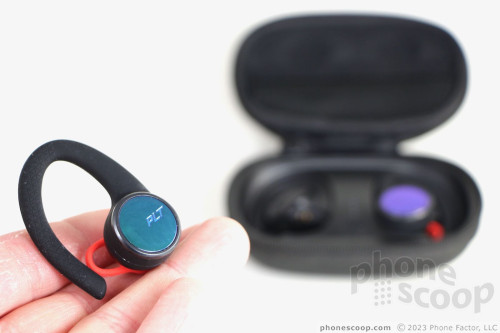
The 3100s come in two colors: black or gray. The black model has a bright red eartip while the gray model has a more subdued black eartip. The outer control panel of both is a reflective aqua color.
The individual headphones fit into the included charging case snugly. Deep cutouts ensure you put each into its proper place so it can make contact with the charging pins. The charging case itself is tough, though rather large. It has a smooth, matte exterior and a firm plastic interior. A small button in between the two headphones turns them on initially and activates pairing mode. The same button also briefly turns on some LEDs so you can gauge battery life of the case and the headphones.
In all, I'd describe the BackBeat Fit 3100 as unintimidating. I like the general look of the them, and found them comfortable to wear. The controls could be clearer, but charging them and using them is simple enough.
Software
The BackBeat app — available for both Android and iOS — is optional. The app covers the basics. With it, you can update the 3100's firmware, reconfigure the tap controls, access the user guide, and more.
Customizing the tap controls is a bit of a pain. There are no instructions; it takes trial-and-error to get things moving.
You can set the 3100s to play your favorite playlist with a single press of the left earbud. That's pretty neat. It works with your default music player.
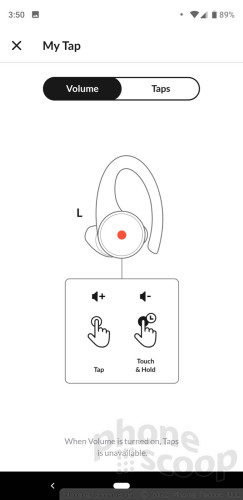
Other options let you toggle HD voice on and off, rename the headphones, set battery preferences (percentage vs. time left), control system volume, switch primary earbud (which one talks to the phone), choose your preferred language, and manage connections. These are all easy to perform.
Perhaps the most useful feature is a Find My Headset tool. As long as your phone and the BackBeat 3100 are connected and in range of one another, you can force a missing earbud to sound a tone to help you locate it. If the bud is disconnected, the app will provide a map and show its last known location.
Despite the fact that these are "fitness" headphones, the app does not offer any fitness tracking or other exercise tools. Odd.
Performance
Making those initial Bluetooth connections was a breeze. Open the case, press the button in the case for 2 seconds, and the buds turn on in pairing mode. They'll show up in your phone's Bluetooth device picker in seconds. A quick tap and you're paired.
Pair By Pressing Button
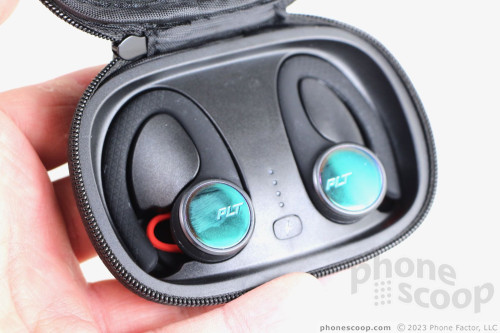
The 3100s offer the standard Bluetooth range of 10m/33ft. Once I stepped beyond the 33-foot mark, the 3100s promptly lost the connection. Within range, the 3100s remained connected to the phone consistently. There was no drop between the headphones and the primary earbud.
The 3100s did, however, fail to maintain a perfect connection between one another. The non-primary bud was prone to losing its connection to the other from time to time. It dropped just for a second, but this becomes grating when it happens again and again. This issue plagued first-generation headphones from other manufacturers, so I'll cut Plantronics a little slack here. The problem for Plantronics is that its competitors have resolved this problem.
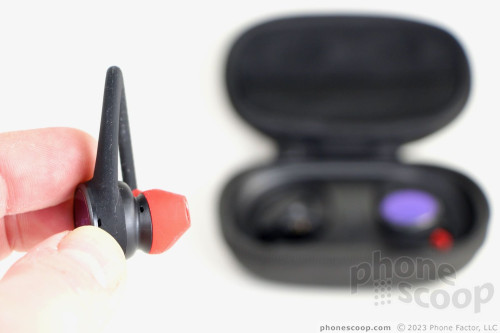
Plantronics somehow crammed 13.5mm drivers into the 3100s. Most in-ear buds have drivers in the 6mm - 8mm range. It's too bad Plantronics wasn't able to capitalize on the larger size for more impressive sound.
The headphones use only A2DP and AVRCP for encoding/decoding music, and not more advanced codecs such as aptX. On the plus side, the 3100s have a 20 Hz - 20 kHz frequency range, low distortion, and good sensitivity.
Sound quality is very good, but definitely short of excellent. What I like most is the clarity. Music was crisp and bright. It sounded warm and clear. That's all good. Some owners, however, will surely be disappointed with the bass response. Skull thumping these are not. If you prefer bass-heavy music, the BackBeat Fit 3100s are likely not for you.
The BackBeat app does not include an equalizer, so you'll have to rely on your music app (iTunes, Spotify, Play Music) to tweak the sound. I was able to do this and find a setting that worked for me. Even with a bass booster turned up, the 3100s fall a bit flat on the bottom end.
I wish the headphones could get louder. They offer more than enough oomph for listening at home or during your bus/train commute. I was happy enough with the volume at a coffee shop. But loud, windy city streets could overpower them.
Voice calls routed through the BackBeat Fit 3100s sound excellent.
Battery life falls a little bit short compared to the competition. The 3100s offer 5 hours of listening on a single charge. The charging case can recharge the headphones once, for a total playback time of 10 hours. Similar headphones offer 2 full recharges in the case, making for total playing time closer to 15 hours. At least the 3100s did live up to Plantronics' modest battery claims.
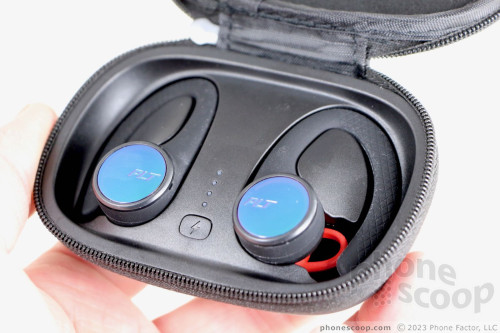
Charging the headphones in the case for 15 minutes gives you 1 hour of listening. Together, the headphones and charging case take nearly 3 hours to fully recharge. That's a bit painful.
Discussion
Plantronics covered the basics with its first set of truly wireless headphones. The BackBeat Fit 3100 offers a pleasing look, a comfortable fit, and respectable list of features. I like the Find My Headphone tool (available via the app), and general music playback is very good.
There's room for improvement. I think combined bud/charger battery life could be better, and I'd like for Plantronics to tweak the bass response and firm up bud-to-bud connections.
The BackBeat Fit 3100s are available online for $140. That's a bit high, considering how well the competition performs for just a few dollars more. If these were $110 or $120 I'd say pick them up for your workouts, but at the moment you're better off spending a little bit more on the Jabra Elite Active 65T.
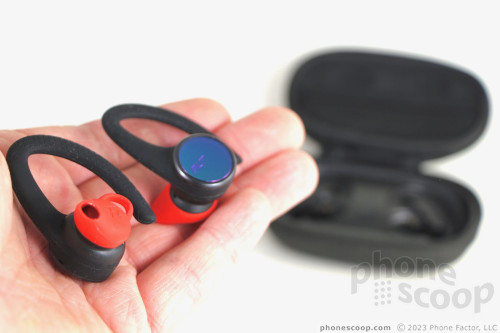
Comments
No messages


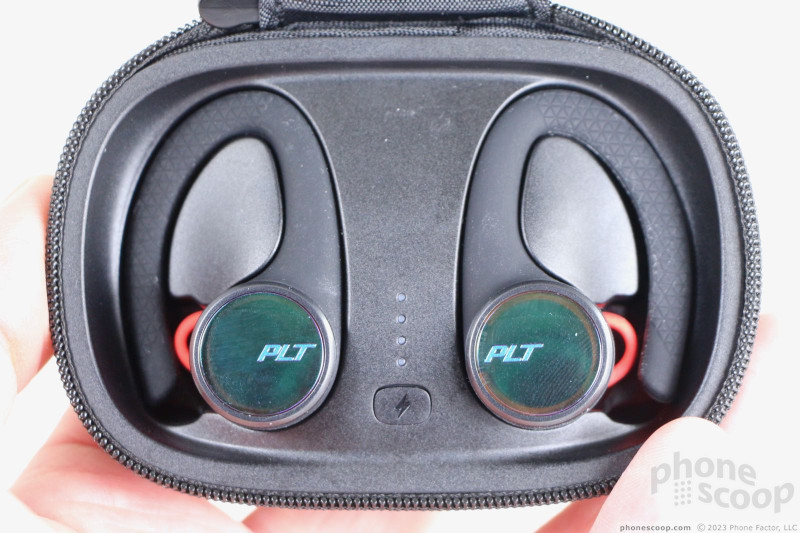




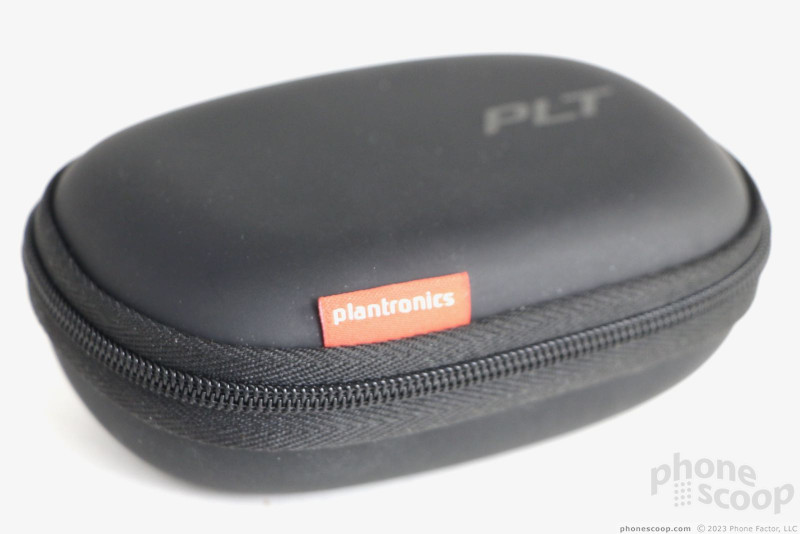




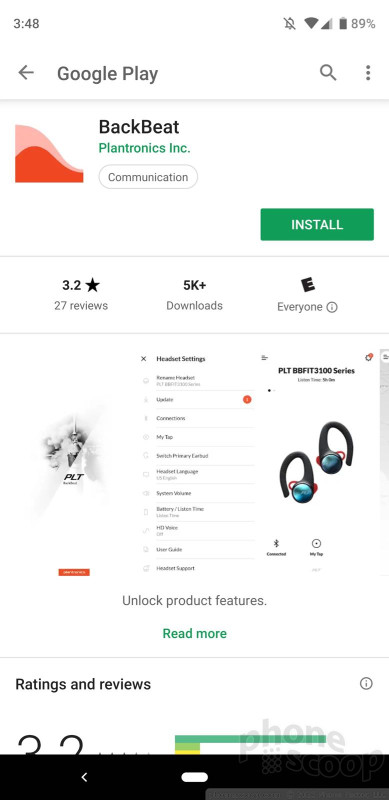





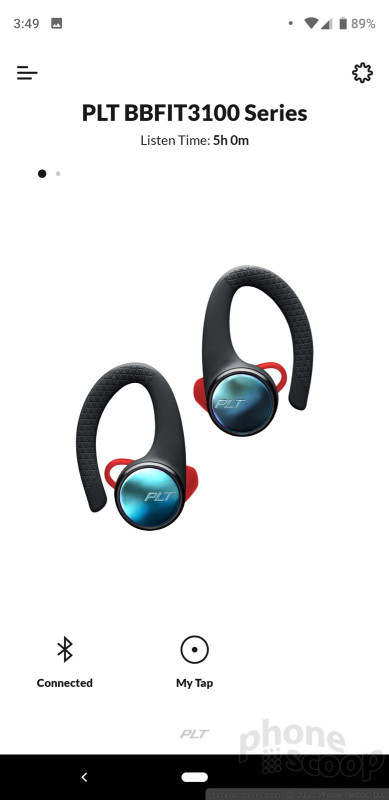







 iPhone 15 Series Goes All-In on USB-C and Dynamic Island
iPhone 15 Series Goes All-In on USB-C and Dynamic Island
 Samsung S24 Series Adds More AI, Updates the Hardware
Samsung S24 Series Adds More AI, Updates the Hardware
 Sony Updates Flagship Phone With New Camera
Sony Updates Flagship Phone With New Camera
 Apple Previews Major New Accessibility Features for iOS
Apple Previews Major New Accessibility Features for iOS
 Google Pixel 8 Series Saves the Best for the Pro
Google Pixel 8 Series Saves the Best for the Pro

